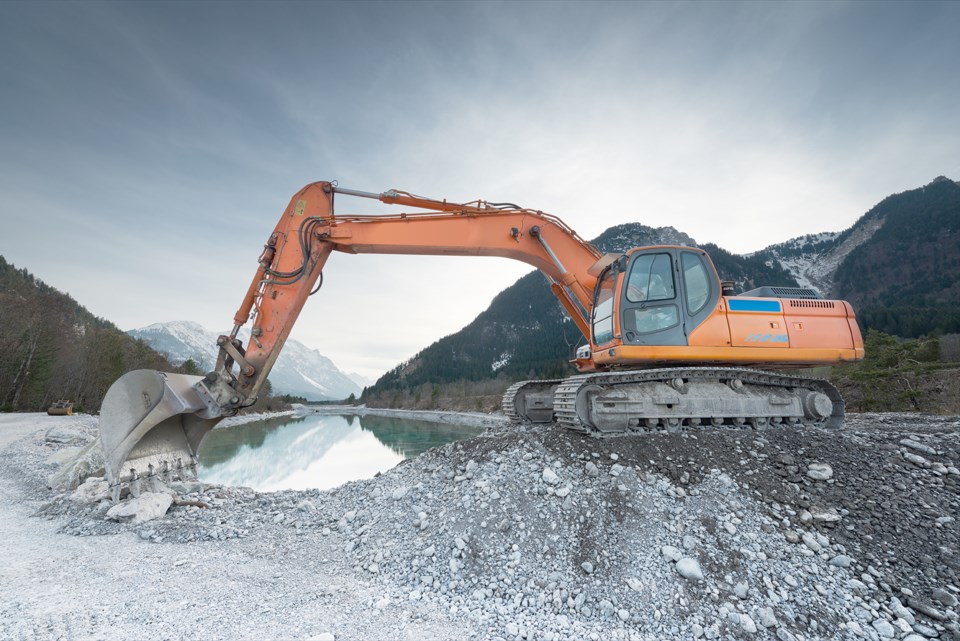The controversial proposal for a sand and gravel mine located in the McNab Valley on the shore of Howe Sound has received conditional federal approval.
In her Canadian Environmental Assessment approval for the Burnco Aggregate Mine Project Thursday Catherine McKenna, Minister of Environment and Climate Change, said the proposal is not likely to result in significant negative environmental effects if mitigation measures are carried out.
“Our government is committed to protecting the environment while growing our economy. This finding was based on rigorous science, extensive consultation with Indigenous groups and a diversity of Canadians, and input from experts across various disciplines,” McKenna said in a news release.
Local environmental groups have vehemently opposed the project.
My Sea to Sky called the announcement, "a bitter disappointment for My Sea to Sky’s 16,000-plus supporters and other residents of Howe Sound," in a media release Friday afternoon.
"We had hoped that the Government would follow through on its election promise to respect community opinions. Apparently, 'only communities can grant permissions' is, like several other faux-promises, 'no longer operative.' Howe Sound communities certainly do not grant permission for this destructive project."
For her part, Minister McKenna said the conditions placed (see below) on the approval would protect the environment.
“We are confident the mitigation measures outlined for this project will allow it to move forward in a way that protects the environment while supporting the local economy and creating good middle-class jobs," McKenna said.
Once in operation, the mine will produce up to 1.6 million tonnes of gravel per year over a 16-year operating life.
“We are really happy about it,” Burnco’s Derek Holmes told The Chief on Friday morning, adding the company has been working toward this sand and gravel mine for almost a decade.
“A lot of work went into that project and it is nice to see a positive result at the end of it.”
The project has now been referred to Fisheries and Oceans Canada (DFO), for a decision regarding a Fisheries Act authorization.
DFO is charged with ensuring that mitigation measures and follow up programs are implemented.
My Sea to Sky representatives told The Chief they were hopeful the department would reject the project.
The project received Squamish Nation and provincial approval in March.
Holmes said next steps for the company are to seek regulatory permits.
If all goes according to plan, construction could begin in 2019.
Comprehensive Study Report points on potential damage and mitigation
The key adverse effects identified during the environmental assessment are:
- Loss of fish habitat in McNab Creek and watercourses downstream of the pit lake;
- Changes in surface water quality and quantity;
- Effects to the marine foreshore environment;
- Effects to marine wildlife including cetaceans;
- Loss of Roosevelt elk, grizzly bear and amphibian habitat;
- Effects to the area from river avulsion (loss or gain of land due to movement of the water course);
- Noise effects to nearby residents and wildlife; and
- Changes to current use of lands and resources for traditional purposes by Aboriginal persons.
Mitigation measures, to reduce or eliminate potential adverse effects, were developed during the course of the environmental assessment. Key mitigation measures include:
- Implementation of the Fish Habitat Offsetting Plan to compensate for the loss of fish habitat;
- Isolating contact water from fish habitat;
- Maintaining groundwater flows by adjusting the pit orientation;
- Using pre-cast concrete and constructing hard substrate to marine pilings for intertidal habitat;
- Installing marine piling using acoustic dampening methods and scheduling marine works when fish and cetaceans are not in the vicinity;
- Limiting vegetation clearing, conducting preclearing surveys, maintaining habitat corridors, buffers and riparian zones, and avoiding sensitive breeding periods;
- Implementation of the Roosevelt Elk Habitat Offsetting Plan to compensate for the loss of elk habitat;
- Developing amphibian compensation habitat and crossings;
- Conducting construction and operation activities during the day time;
- Maintaining natural barriers and using topography to limit acoustic disturbance;
- Application of an Access and Communication Protocol for the Squamish Nation; and
- Measures outlined above to mitigate effects to water quality, fish and fish habitat, noise, wildlife and vegetation would also mitigate some effects to current use of lands and resources for traditional purposes.
**Please note, this story is being updated as more information becomes available.



